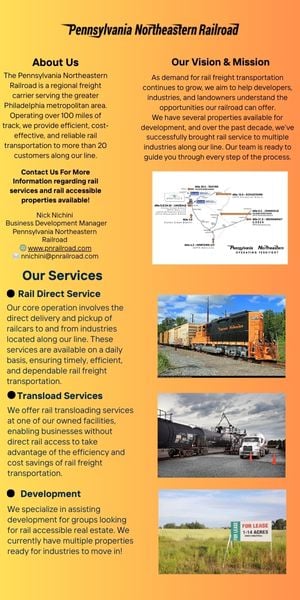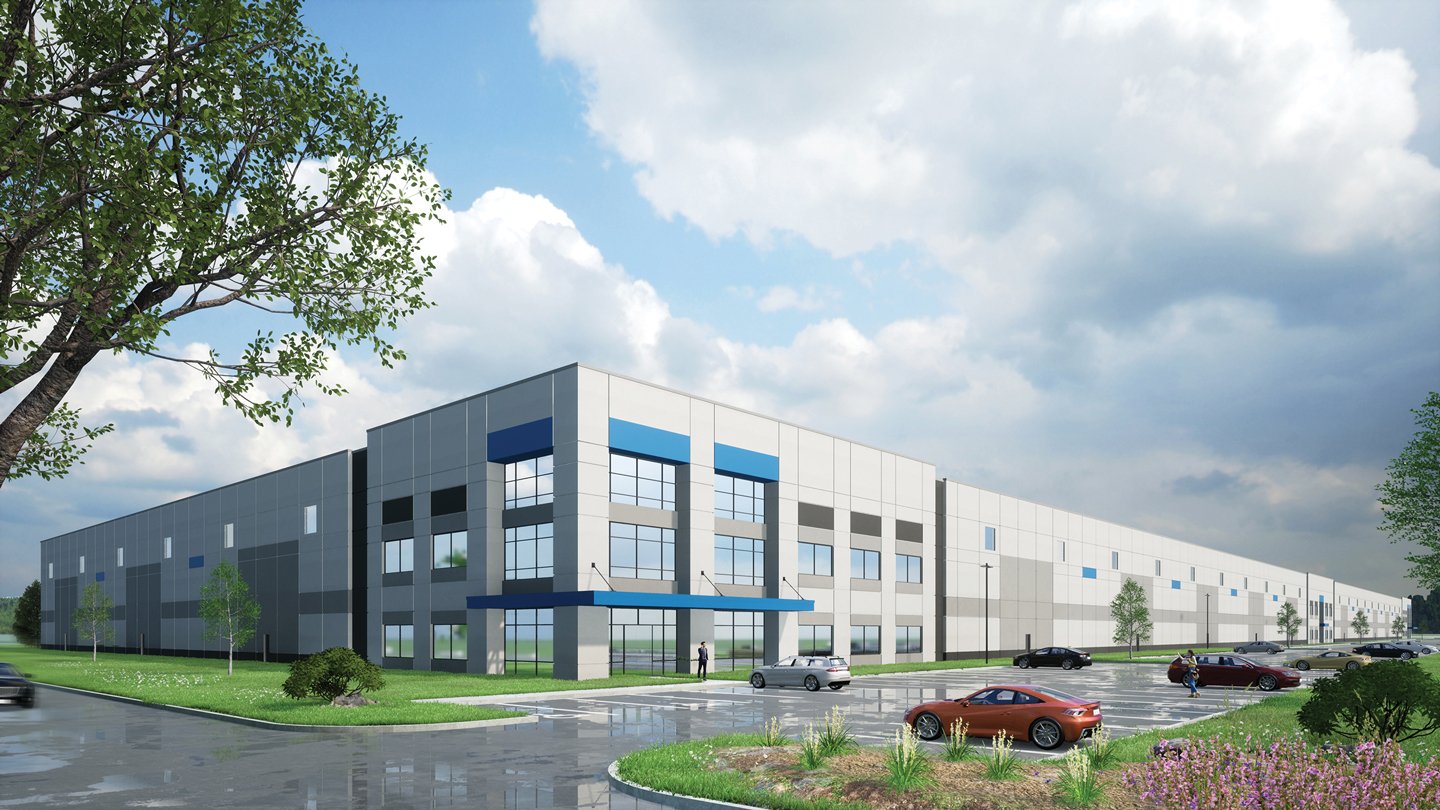
Breaking Ground and Barriers: The Evolution of Industrial Redevelopment
Allstate’s former corporate office campus is being transformed into 3.2 million square feet of modern logistics facilities.
Consumers’ expectations for expedited goods and last-mile delivery have escalated the needs of logistics real estate occupiers, especially e-commerce and omnichannel retailers working to optimize their supply chains and warehouse networks. They want to be close to their customers and compete on delivery to maximize their pricing power and market share. This is why leading logistics developers seek to anticipate the timing, location and scale of demand to deliver new buildings. Subsequently, urban infill locations are becoming increasingly rare.
Dermody Properties has placed a strategic focus on actively exploring a variety of underperforming properties to repurpose and reinvest in — taking what was once established real estate made obsolete by cultural and demographic changes and redeveloping these properties into logistics facilities or campuses. The Logistics Campus, formerly the site of Allstate Insurance’s corporate headquarters outside of Chicago, is Dermody Properties’ most prominent example.
From Office Park to Logistics Center
At its peak, 13,000 people worked at the Allstate Glenview, Illinois, campus, which the insurance company occupied from 1967 to 2022. It sits along almost one mile of frontage off the 10-lane I-294 Tri-State Tollway and was an iconic landmark for millions of commuters in the Midwest. It was also a prime example of an aging office campus facing the rise of remote work. As Allstate chose to allow many of its employees to remain working from home post-pandemic, the offices were left vacant, and the campus became an ideal candidate for redevelopment.
Given several key factors, including its location near population centers and highways, the site was optimal for logistics use. When Allstate decided to sell, Dermody Properties viewed it as a rare opportunity. The combination of scale (232 gross acres) in that location so close to affluent households (over 1 million residents within a 10-mile radius) was like finding a needle in a haystack.
The North Suburban O’Hare industrial market in Chicago spans from I-90 in the south to Lake Cook Road in the north, running along I-294. This is the best-performing submarket in Chicago in terms of both vacancy rate and rents. The submarket benefits from excellent access to O’Hare International Airport and the central business district of Chicago while also being home to some of the area’s largest middle- to upper-income residential neighborhoods. Its access to transportation, labor and amenities is unparalleled relative to the entire metro Chicago market.
Residents of the surrounding communities were encouraged to express their support for or opposition to the redevelopment project during public hearings. As a result, Dermody Properties adopted changes to the plan to mitigate visual and noise concerns at the south end of the campus adjacent to a residential neighborhood and offered a design to shield most of the planned truck docks from Sanders Road, which runs along the west side of the campus.
In October 2022, Dermody Properties closed on the purchase of the campus from Allstate for $232 million. Transforming the office campus — with buildings dating back to the 1960s and 1970s — into modern logistics facilities required careful consideration, especially in integrating industry-leading sustainability practices during the demolition phase (see feature box below).
The Logistics Campus is a planned 10-building logistics park. The buildings range from 92,000 square feet to 455,000 square feet, for a total of more than 3.2 million available square feet with flexibility to accommodate build-to-suits. Dermody Properties is seeing strong interest from specialty light manufacturers, including in the food and pharmaceutical industries, in addition to logistics companies. Most recently, UPSIDE Foods selected The Logistics Campus as the location for its Midwest headquarters.
The project is distinct in that it is adjoined on three sides by the I-294 Tollway, a Cook County forest preserve and a neighborhood retail center anchored by a grocery store. Road infrastructure at Sanders Road, Willow Road and the adjacent tollway interchange were previously sized to support the 13,000 daily Allstate employees commuting to and from the campus. Mature landscaping screens most of the project from Sanders Road. This rare combination of factors was a major consideration for the village of Glenview when it approved the annexation and rezoning of the land for logistics uses. Once the logistics campus is complete, estimates are that daily traffic volumes will be only 75% of what they were during the prior office use.
The economic impact of The Logistics Campus will be significant. When fully developed, approximately $650 million of private capital will have been invested. Of that, approximately $150 million will have been paid in construction labor costs. It is estimated that it will house 1,900 full-time jobs in the community and generate $134 million in property tax revenue over a 10-year period that will support local schools, Cook County, the city of Prospect Heights and the village of Glenview, as well as other local taxing bodies such as libraries and the forest preserve.
Challenges in Logistics Conversions
Communities are often reluctant to replace low truck-intensive uses with relatively higher ones, which are assumed to place stress on existing ground-transportation infrastructure. This is the No. 1 challenge developers must overcome in the conversion of retail or office uses to logistics. It is therefore important to select sites adjacent to or near highways and interstates to minimize or eliminate the impact of truck traffic on established commercial arterials, especially residential streets.
Logistics uses are often considered positive for communities that seek to stabilize and grow their commercial property tax bases. This is especially true for blighted sites suffering from chronic vacancies and deteriorating values. However, in cases where the prior use generated significant sales tax receipts for the municipality, conversion to a logistics use may generate local opposition, even if the existing retail buildings are obsolete. Faced with this dilemma, some communities have chosen to oppose conversion to logistics uses in favor of preserving residents’ hopes of finding a future retail use.
The demolition of antiquated facilities creates another area of uncertainty and risk for developers. Infill sites tend to have complicated environmental factors stemming from previous uses. Structures built before the mid-1970s are often riddled with asbestos. Developers are tasked with removing potentially contaminated materials before demolishing buildings to ensure the safety of the demolition crews and neighbors. At The Logistics Campus, Dermody Properties remediated the asbestos materials in advance of physical demolition and used massive misters during the most abrasive activities to contain airborne particulates.
Navigating these risks requires patience, time and money. Dermody Properties spent over $500,000 in legal and consultant fees before closing on what would become The Logistics Campus.
With e-commerce continuing to grow — 24% of retail purchases are expected to take place online by 2026, according to a 2023 Forbes Advisor article — logistics companies will covet infill locations to serve increased customer demand. As this happens, there will continue to be a natural tension between consumers’ desires for fast delivery and their concerns over truck traffic in their communities. Logistics property developers must balance these considerations and propose projects that balance all stakeholders’ needs.
Douglas A. Kiersey Jr. is CEO and president of Dermody Properties.
Taking the Environment Into Account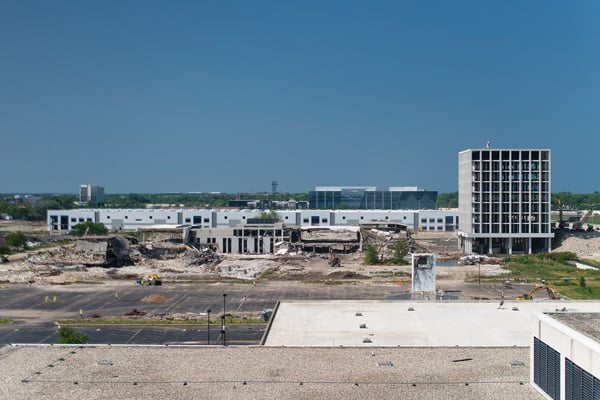
Concrete and asphalt gathered during demolition were ground up and used as fill on The Logistics Campus. Courtesy of Dermody Properties Environmental, social and governance (ESG) considerations are a strategic priority for Dermody Properties. Numerous sustainability efforts have been undertaken at The Logistics Campus, including the reuse or recycling of nearly all material generated from demolition activities. From the steel at the campus to interior items like sinks, toilets and doors — which were sold to salvage companies — everything is evaluated for possible reuse or recycling. Even the concrete and asphalt gathered during demolition were ground up and used as fill on the campus, thus diverting thousands of tons of construction waste from landfills. At all properties owned and managed by Dermody Properties, including The Logistics Campus, customers are encouraged to explore energy reduction and seek facility upgrades and features that align with LEED certification, such as LED lighting with motion sensors, skylights/clerestory windows and reflective roofing systems. The facilities will accommodate alternative fuel sources and electric vehicle charging stations, and are structurally designed to be “solar ready,” meaning they can accommodate the additional roof load weight of solar panels. When meeting with the local community about The Logistics Campus, Dermody Properties heard how important it was to preserve the atmosphere of the parklike campus. Dermody Properties is preserving 50 years of mature plant life and ground cover on the periphery of the campus. Approximately 165 trees were relocated to a tree farm created on campus temporarily until they can be brought back. This accelerates decades of tree growth (compared to planting new, low-caliper trees) to maintain the character and views of The Logistics Campus similar to what they were with the former office campus. The project design of The Logistics Campus blends modern architecture with thoughtfully repurposed natural landscape, seamlessly integrating into the community from a visual perspective. |
RELATED ARTICLES YOU MAY LIKE

Governments Turning to Adaptive Reuse Legislation for Additional Housing
Tax breaks, streamlined approvals and grants are some of the supply-side incentives.
Read More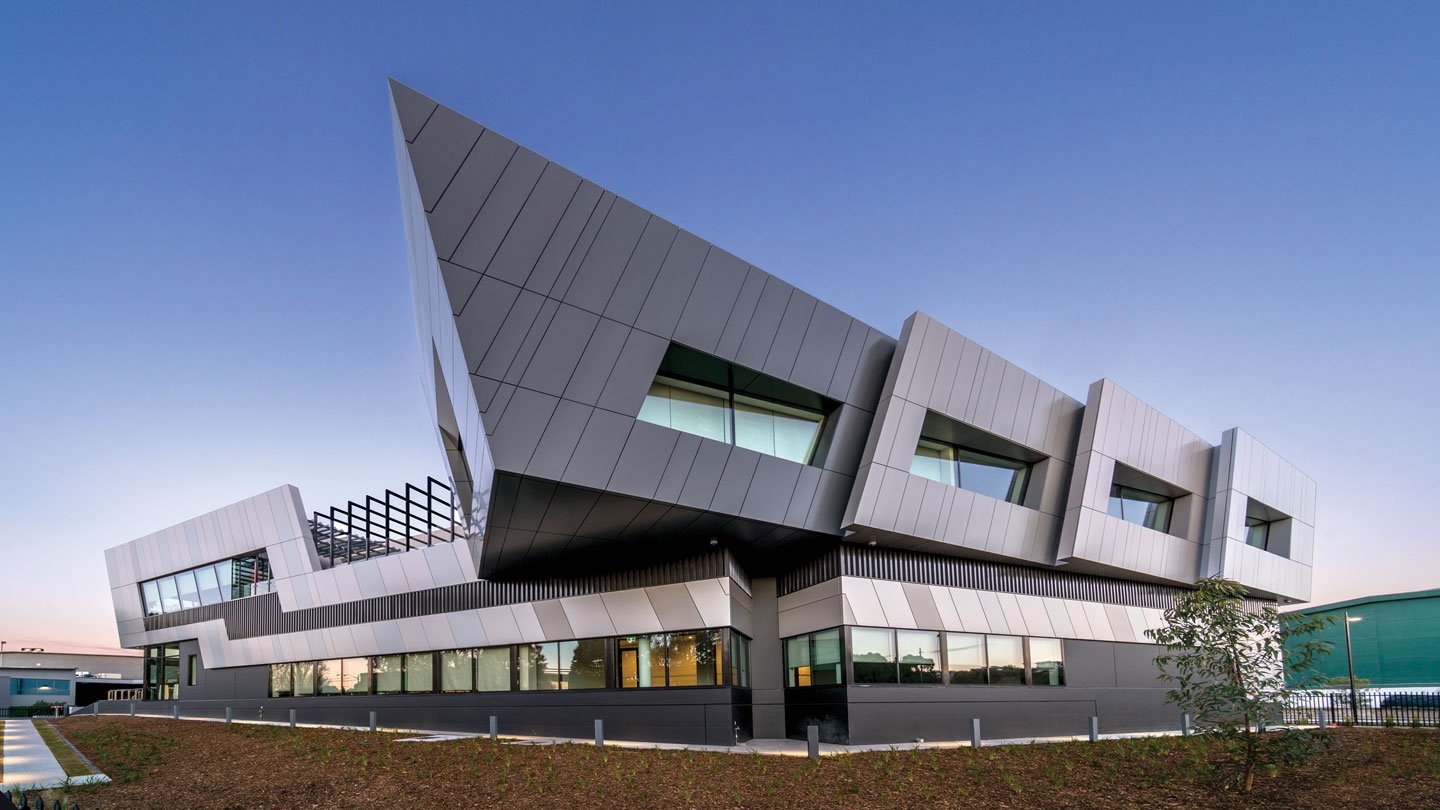
Data Center Real Estate: Challenges and Opportunities in the Digital Age
Data center inventory growth has accelerated across North American markets.
Read More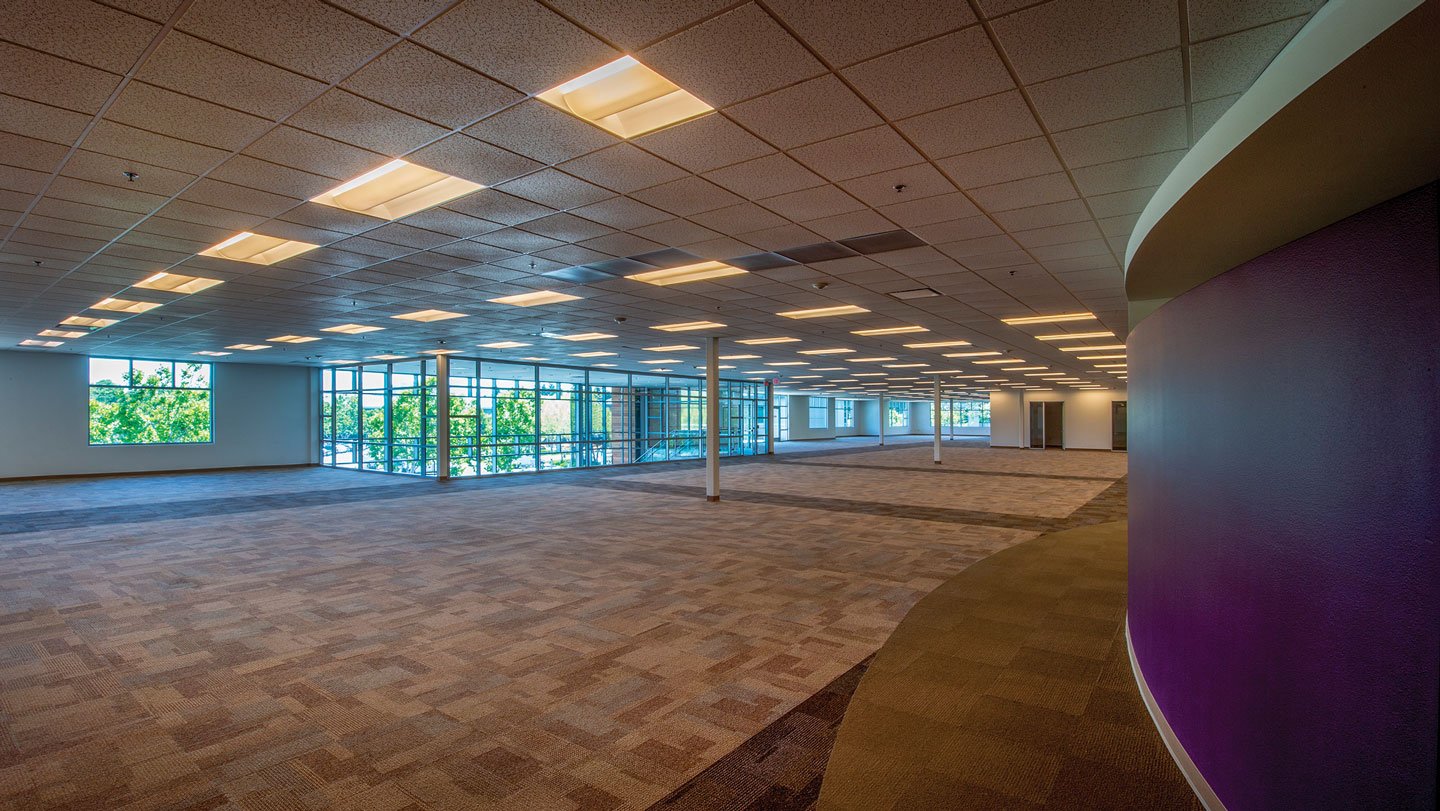
Ripe for Conversion
Will a radical change in the purpose of underutilized office buildings transform the market?
Read More

